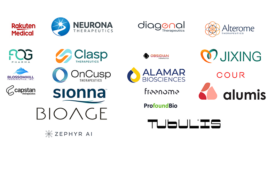As obesity rates continue to soar across the globe, analysts anticipate that the market for anti-obesity drugs will skyrocket in the coming years. Goldman Sachs projects the market to be worth $44 billion by 2030. That’s an almost 16-fold expansion from its valuation of approximately $2.82 billion in 2022. Barclays is even more upbeat on the potential of the drug class, projecting that the market could approach $100 billion by 2030, according to CNBC.
Jenny Chang, portfolio manager with Goldman Sachs Asset Management, highlighted the potential of the drug class, which includes Novo Nordisk’s Ozempic (semaglutide) and Wegovy (also semaglutide), as well as Eli Lilly’s tirzepatide. “Some 42% of Americans are obese, and the economic toll is staggering,” she said in a recent video. The investment firm noted that obesity costs the American healthcare system are in the ballpark of $170 billion annually. Furthermore, the obesity epidemic could drag down global GDP by $4 trillion by 2035.
Echoing this sentiment, JPMorgan Chase & Co. believes Novo Nordisk could capture almost half of this nascent market, as Bloomberg reported. That would equate to a sales opportunity for the company valued at roughly $33 billion by 2030. With Novo Nordisk already establishing a foothold in Europe with Ozempic and Wegovy, the company is set to profit handsomely from the hot demand for novel obesity and cardiovascular disease treatments. JP Morgan believes the overall obesity drug could hit $71 billion in sales by 2032, with Novo Nordisk and Lilly leading the market. Pharmaceutical giants Pfizer and Amgen are also aiming to enter the competitive landscape with their own weight-loss drugs.
CDC data offers clarity on obesity prevalence
Data from the Centers for Disease Control (CDC) captures the concerning rise in obesity and overweight in recent years. The agency’s data indicate that the U.S. obesity prevalence surged from 30.5% in 1999-2000 to 41.9% in 2017-March 2020.

[Data from CDC]
The CDC also breaks down obesity data by state. In 2021, West Virginia had the highest obesity rate at , while Colorado had the lowest rate at 25.1%. Across the U.S., the South had the highest obesity prevalence in 2019 (34.9%), compared to the West, which had the lowest rate (27.4%).
The map below, also based on CDC data, shows a state-by-state breakdown of obesity rates across the nation. Data from 2021:
Gauging the impact of anti-obesity drugs on the healthcare landscape
Given the soaring rates of obesity and its associated healthcare costs — matched with strong patient demand — the pharmaceutical industry could profit from a new class of blockbuster drugs. As Chang from Goldman Sachs noted, the current medical treatments available for obesity have been limited historically, leading to pent-up demand for effective treatment options. Challenges, however, remain. “Currently, [anti-obesity drugs] are expensive, and so far, insurers have been hesitant about providing coverage,” she explained.
Payers, however, may benefit from taking a more liberal approach in backing the new drugs. “Obesity costs the American healthcare system are in the ballpark of $170 billion annually,” Chang noted. Novel anti-obesity therapies could bend down this cost curve while improving outcomes — especially in terms of cardiovascular health. “Recent clinical trials show that [patients on novel anti-obesity drugs] are having fewer heart attacks and strokes.”
As Chang underscored, the real value of anti-obesity drugs extends beyond appearance and profits of a handful of pharma firms. By addressing the obesity epidemic, these medications could reshape our societal health outlook. The greatest benefit of these treatments could be measured in lives improved, not money earned. Anti-obesity drugs could translate to fewer chronic diseases, reduced strain on healthcare systems, and a new perspective on combating obesity as a core public health priority. More than a cosmetic fix, anti-obesity drugs could play a role in preventing chronic disease. While the financial implications of the drug class is clear, patient empowerment will hopefully be a more enduring legacy.
Filed Under: Cardiovascular, Drug Discovery and Development, Metabolic disease/endicrinology



